Yellow Honeysuckle (Lonicera flava) of the Honeysuckle (Caprifoliaceae) family is a twining vine with terminal clusters of yellow tubular flowers favored by swallowtail butterflies. The genus name honors Adam Lonicer* a German physician, botanist, and herbalist of the 16th Century. The specific epithet is Latin for “yellow”. In the U.S., principal areas of occurrence are 1) from south and eastern Oklahoma, thence eastward across Arkansas and into the southern half of Missouri and 2) in a disjunct area from northeastern Alabama into the southern Appalachians of North and South Carolina. In Arkansas, it occurs across the Interior Highlands (Ozark Plateaus, Arkansas Valley, and Ouachita Mountains). Preferred habitats have loamy to rocky, dry to mesic, acidic to basic soils on bluffs and ridgetops and in open woodlands and along woodland margins with full to partial sunlight.
Vines have conical, glabrous, axillary buds protected by imbricated scales that loosen as new growth emerges in mid-winter. New vegetative (i.e. non-flowering) stems emerge from axillary buds of previous year’s leaves or from adventitious buds (formed within the cambium layer) along an upper stem. They may grow 6+ feet long in their first year. On older plants, new vegetative stems may also emerge from adventitious buds at the top of the rootstock which may grow to 10+ feet long in their first year. The weakly twinning, newly emergent stems are initially strongly ascending, but, with lengthening, orientation becomes horizontal before the weighty distal portion becomes down-trending. To a limited extend, stems may also tightly spiral about a support. New stems bear decussate pairs (rotated 90⁰) of opposite lateral leaves, subtending an axillary bud, and a final leaf pair subtending a single terminal bud. In the new growth-year, due to the down-trending stems, ends of year-old stems die with new axillary stems (and branches – see below) emerging from buds along the elevated portions of the stems. Plants, with stems forming a loose, open to dense viny mass within supporting vegetation, may reach heights of 20+ feet and widths of 10+ feet wide. When a pair of equal-vigor stems (or branches) emerge from opposite axillary buds, in subsequent growth-years, one stem dominates, and the weaker stem dies. The initially pale green, terete, hollow, glabrous stems become woody and tan during their first growth-year with their thin bark. Bark, after several years, exfoliates into strips – most noticeable at plant-base.
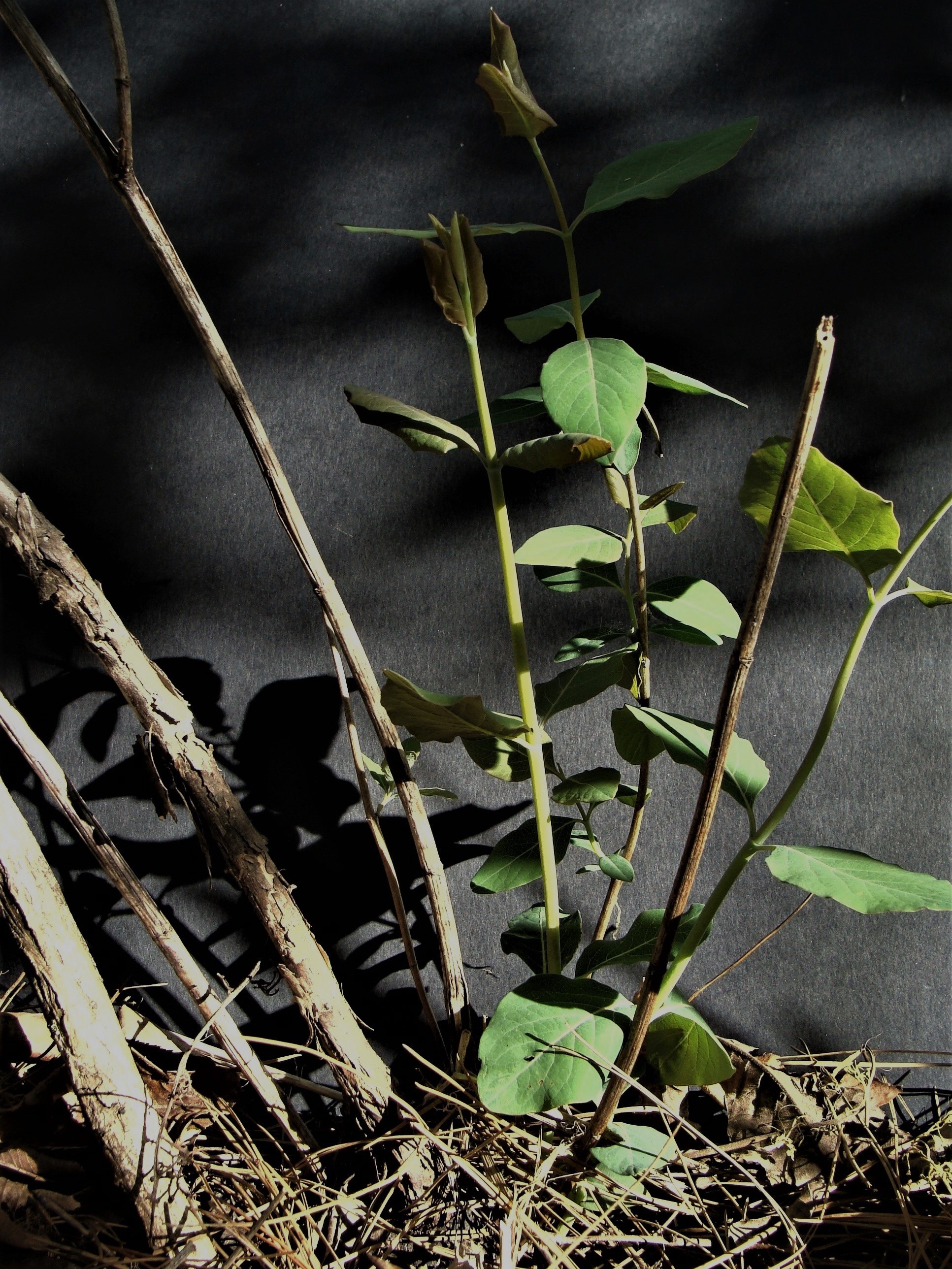
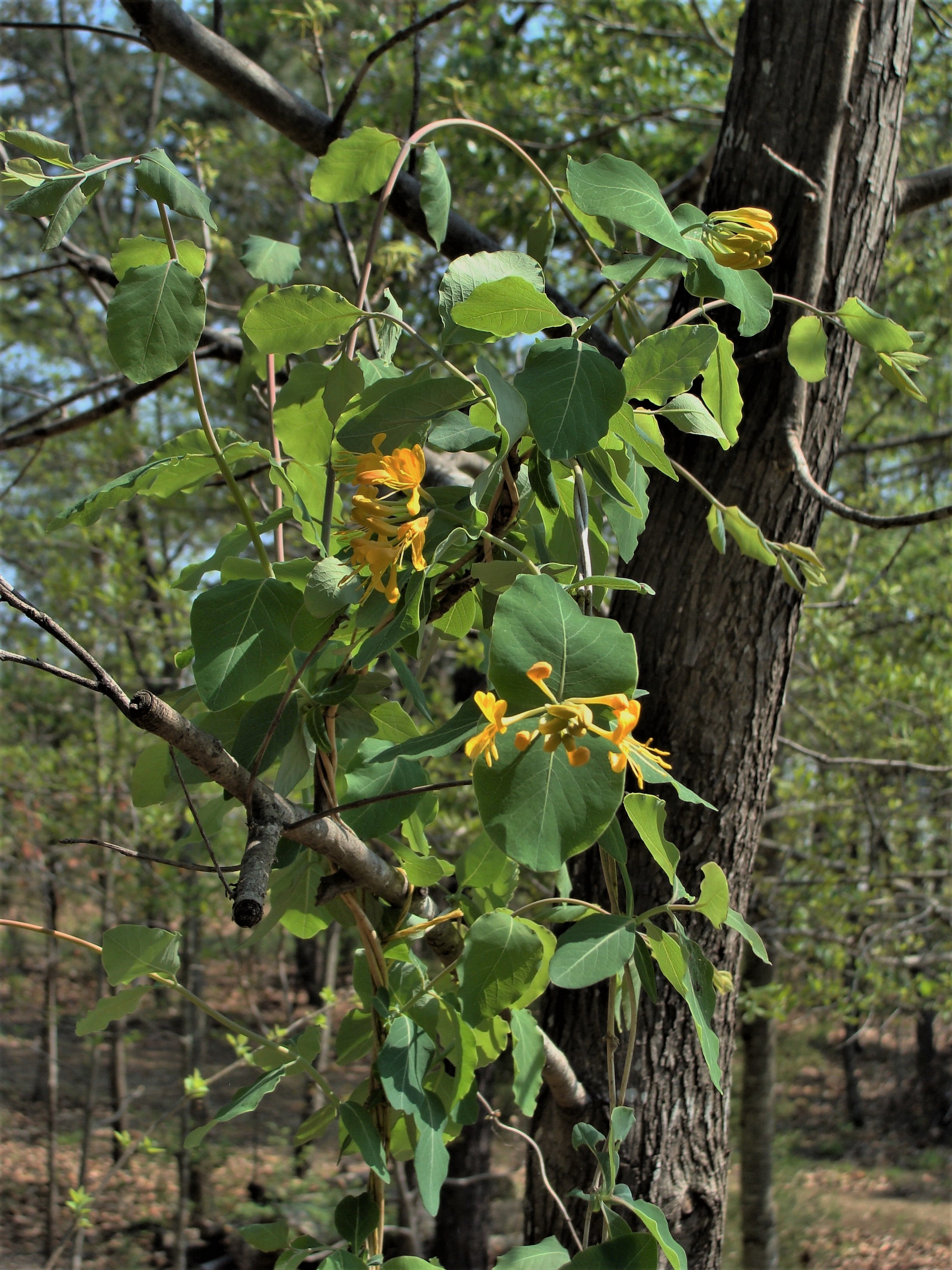
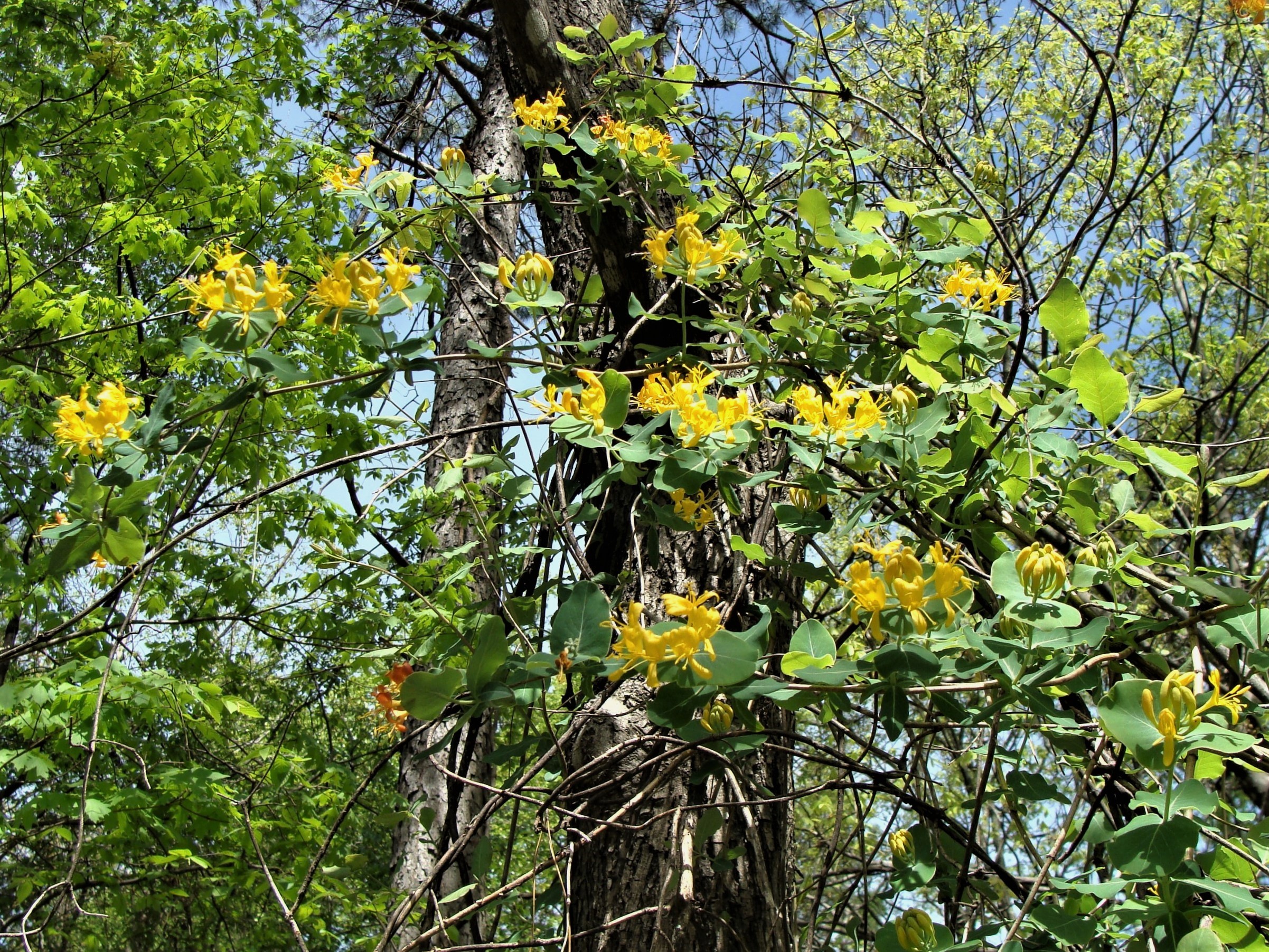
Axillary buds also produce short, glabrous, non-twinning branches. Branches may be vegetative (leaves only) or bear leaves and flowers (“mixed” herein) – both with opposite leaf pairs that are smaller and closer together at branch-base (see Photo 9). Vegetative branches have 2 to 6 pairs of opposite, lateral leaves and a terminal leaf pair. Mixed branches have 2 to 6 leaf pairs, of which the terminal leaf is formed by the fusion of a leaf pair around a terminal “extension” of the branch (aka peduncle – stalk of an inflorescence). Such a fused leaf is referred to as being connate-perfoliate. As is true for stems (see above), vegetative branches have a final pair of elliptic leaves subtending a single terminal bud. Lateral branch leaves subtend axillary buds which may produce weak branches in the next growth-year, often only from the uppermost buds. Subsequent growth of branches, after the first growth-year, is limited and branches die-out within a year or two.


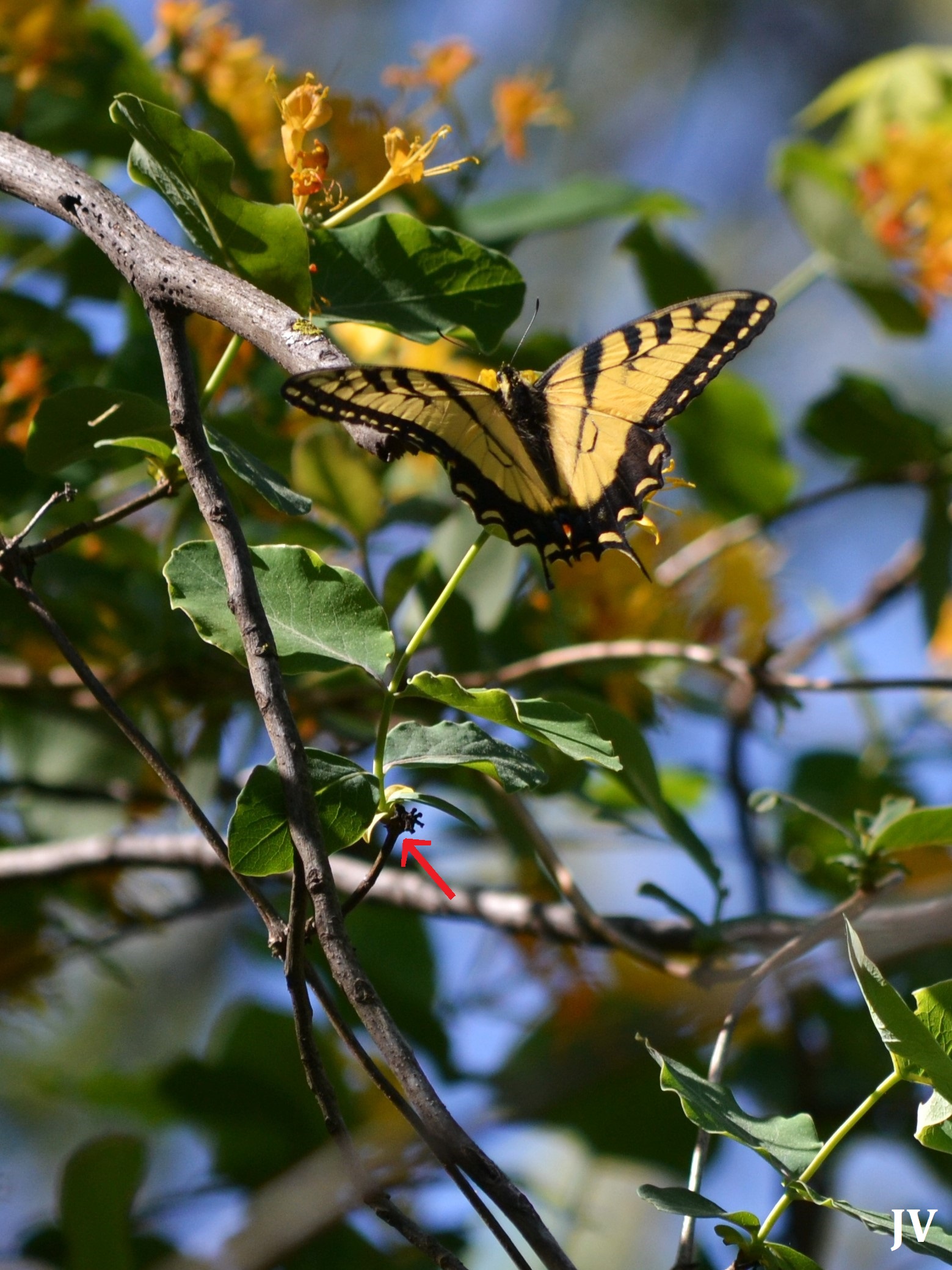
Early leaves of vegetative and mixed branches tend to have blue-gray to reddish shading. Mature early leaves and more distal leaves have a medium-green upper surface and gray-green lower surface. The sessile to short-petiolate leaves, to 3½ inches long and to 2½ inches wide, are elliptic to ovate with entire (smooth) margins. Bases of blades vary from broadly rounded to blunt to wedge-shaped and apexes are similarly shaped. Blades of mature leaves are undulated, in irregular fashion, from midribs toward side-margins. Pubescence of leaves is limited to veins of the lower surface, especially along midrib and secondary veins. While the light-colored upper veins are expressed and channeled (slightly sunken beside their elevated center-line), lower veins (same color as blade) are expressed with a depressed center-line. The off-set pinnate secondary veins divide into tertiary veins midway to leaf margins.
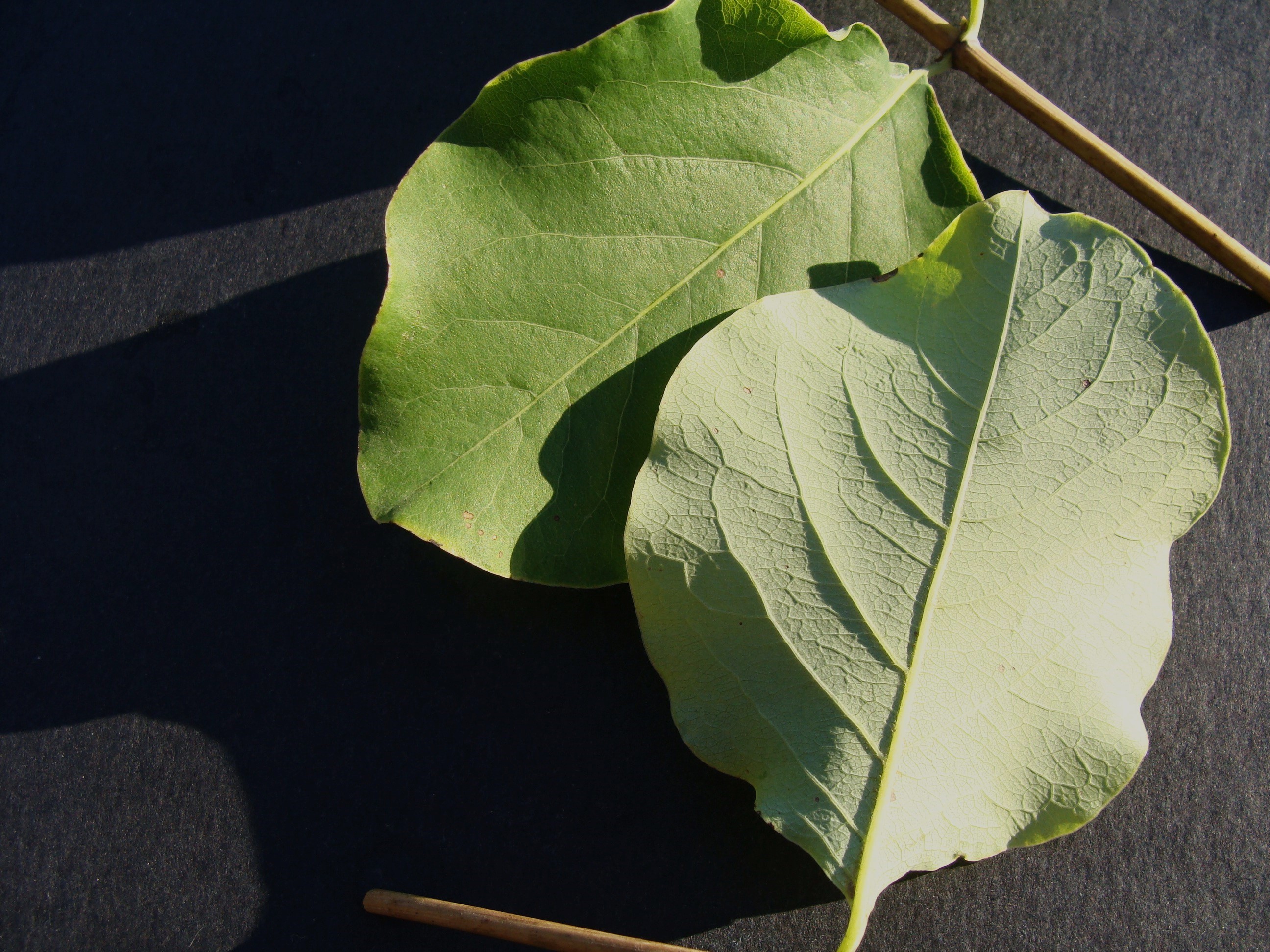
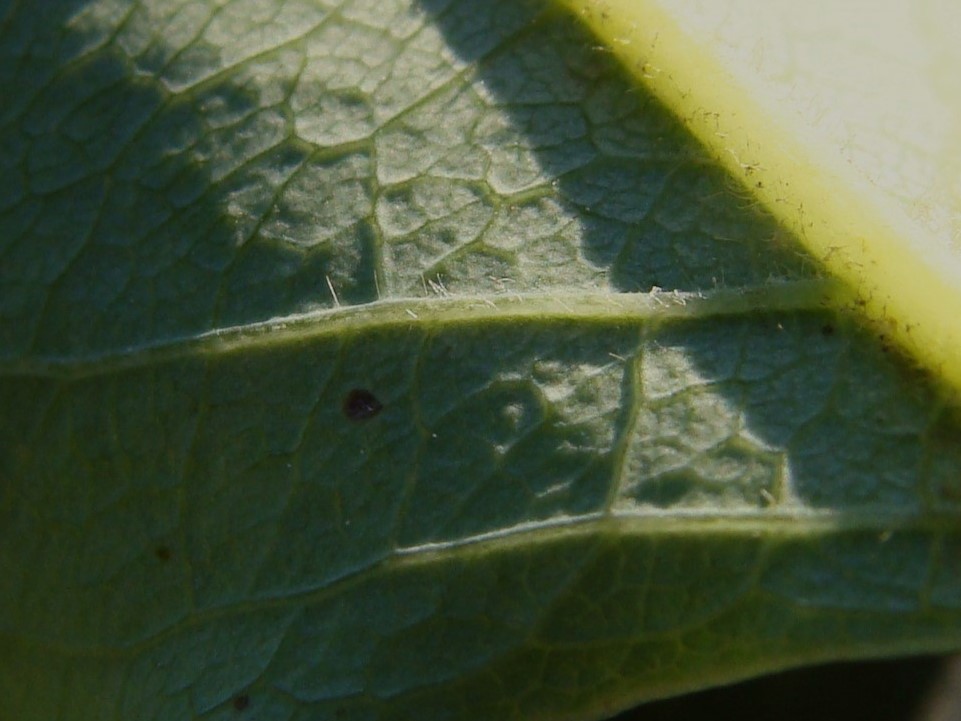
The oval to elongate-ovate connate-perfoliate leaves are to about 6 inches long and 2 inches wide. The smooth margin may be indented where bases of the two leaves fuse and the leaf may have a slight notch or tip at the apexes. Upper surface of leaves may be slightly glaucous (blue-gray) toward midvein and petiole/branch. Other characteristics of perfoliate leaves are the same as noted for elliptic leaves.
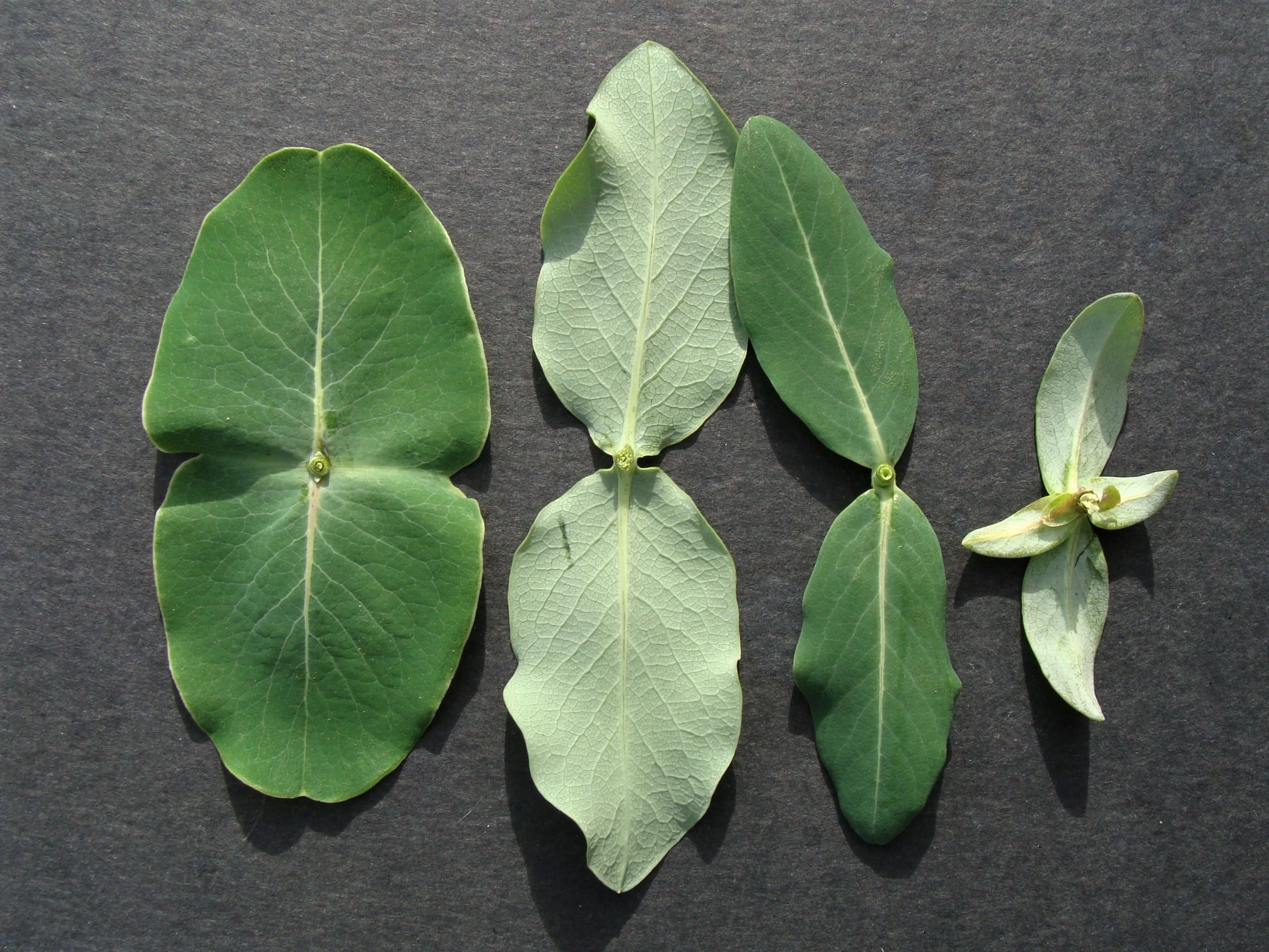
Buds have a slender corolla tube, set on a free-standing ovary, that expands into an inflated upper portion sealed by overlapping corolla lips. Flowers, blooming in early spring over several weeks, are in a terminal cluster of 1 or 2 whorls with up to 6 sessile flowers per whorl arranged radially around the terminal extension. A short segment of a branch’s terminal extension separates the lower whorl from the connate-perfoliate leaf and the upper whorl (if present). The terminal extension ends with a flat-top surrounded by the sessile flowers. Flowers in a whorl bloom as a group with the lower whorl (if 2 whorls) reaching anthesis first. Flowering is most profuse in sunny sites and on the sunniest portions of a plant. Except for tiny bracts at the base of each whorl, the inflorescence is without leaves or bracts.
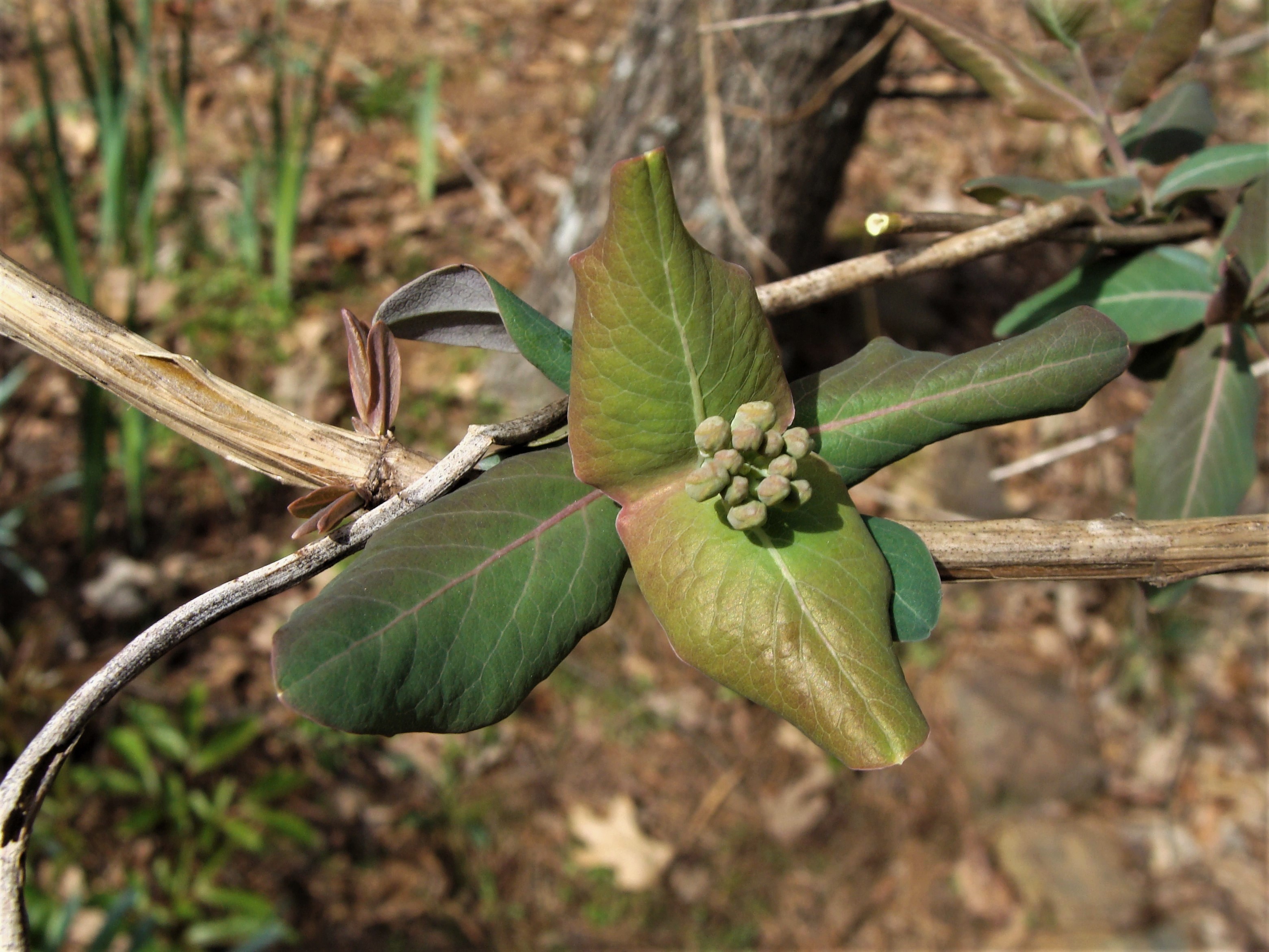
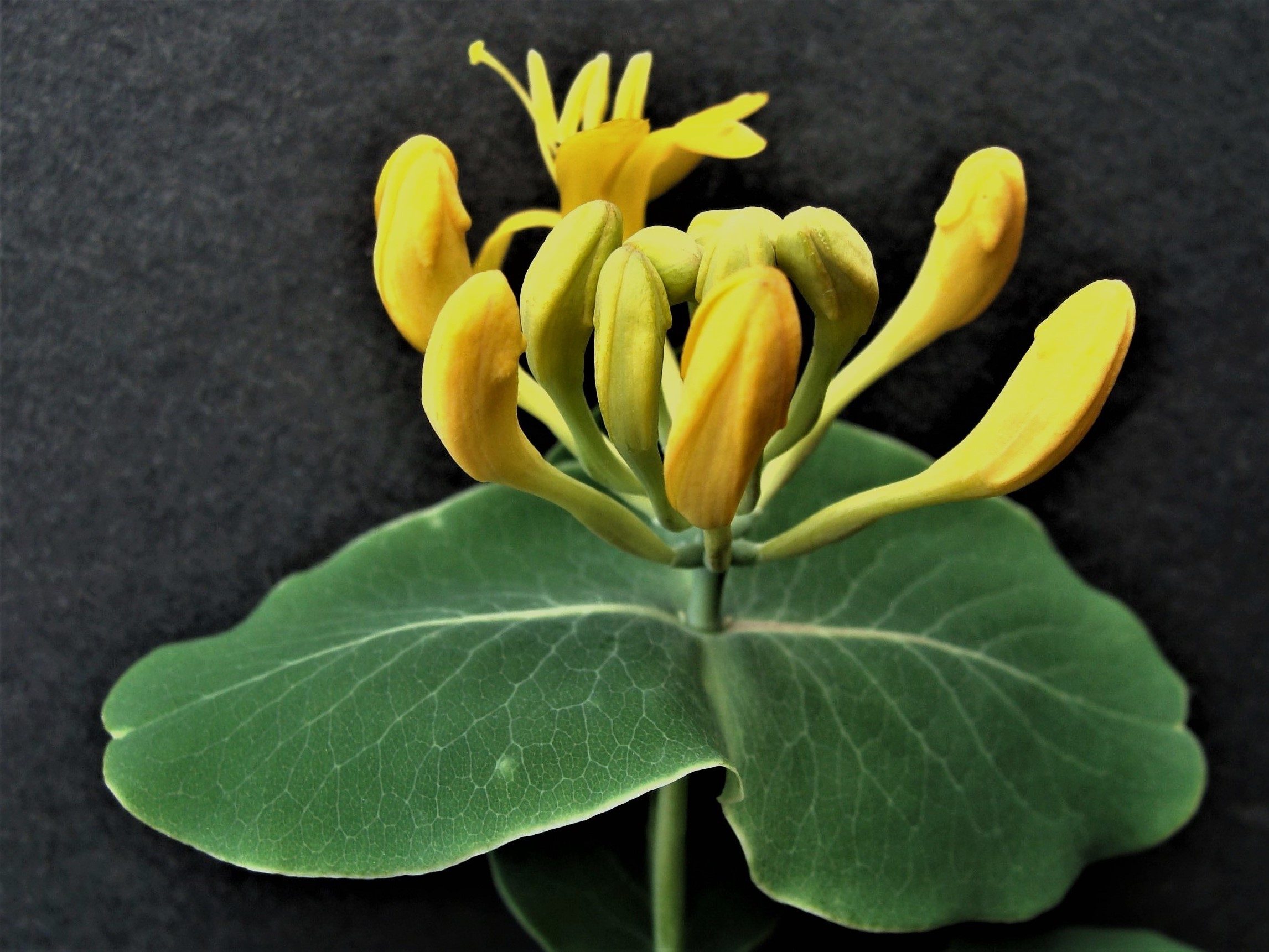
The bright yellow tubular flowers (to 1¼ inches long) have 2 lips, a broadly open throat and a slender corolla tube set on a smooth pale-green ovary. The relatively narrow lower lip, gently recurved downward, has a narrow lower portion gradually widening distally but still significantly narrower than the upper lip. Upper lip, gently recurved upward, is broad with 3 shallow lobes along a wide apex. Flowers are glabrous except for straight hairs inside the tube. The sessile flowers have 5 prominent stamens (filament + anther) and a pistil (ovary + style + stigma), both yellow, that extend well beyond the lips. Projecting stamens, adnate within the lower portion of the tube and recurving slightly in consonance with the upper lip, have slender filaments with elongate anthers attached see-saw fashion. Pistil, more slender and straighter than the filaments, projects away from the anthers, with the broad-flattened stigma extending further than the anthers. The glabrous, green ovary is free (fully exposed). The prominent anthers dehisce along longitudinal lines to release yellow pollen. Flowers become orange as they wilt and drop off cleanly.
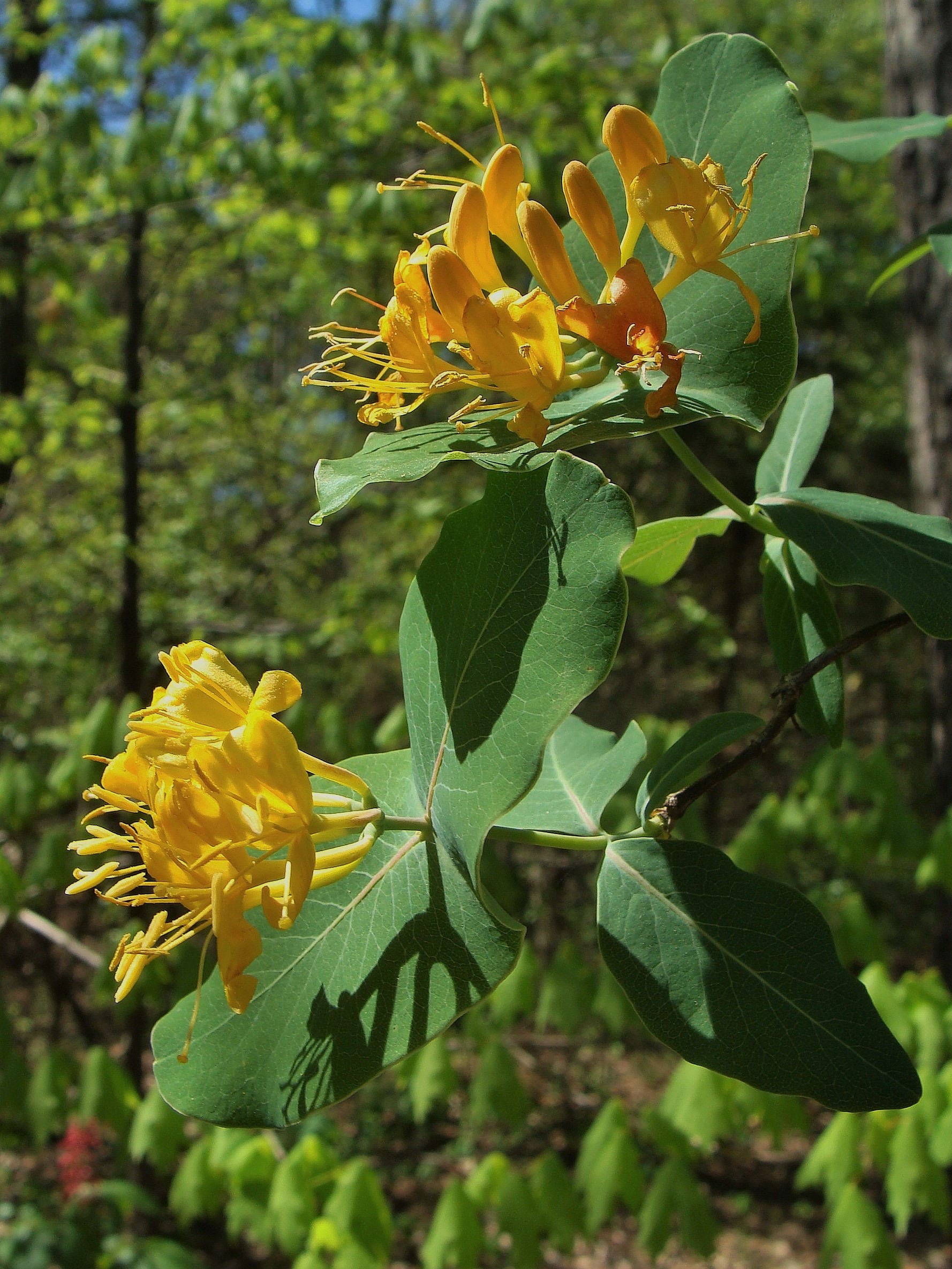

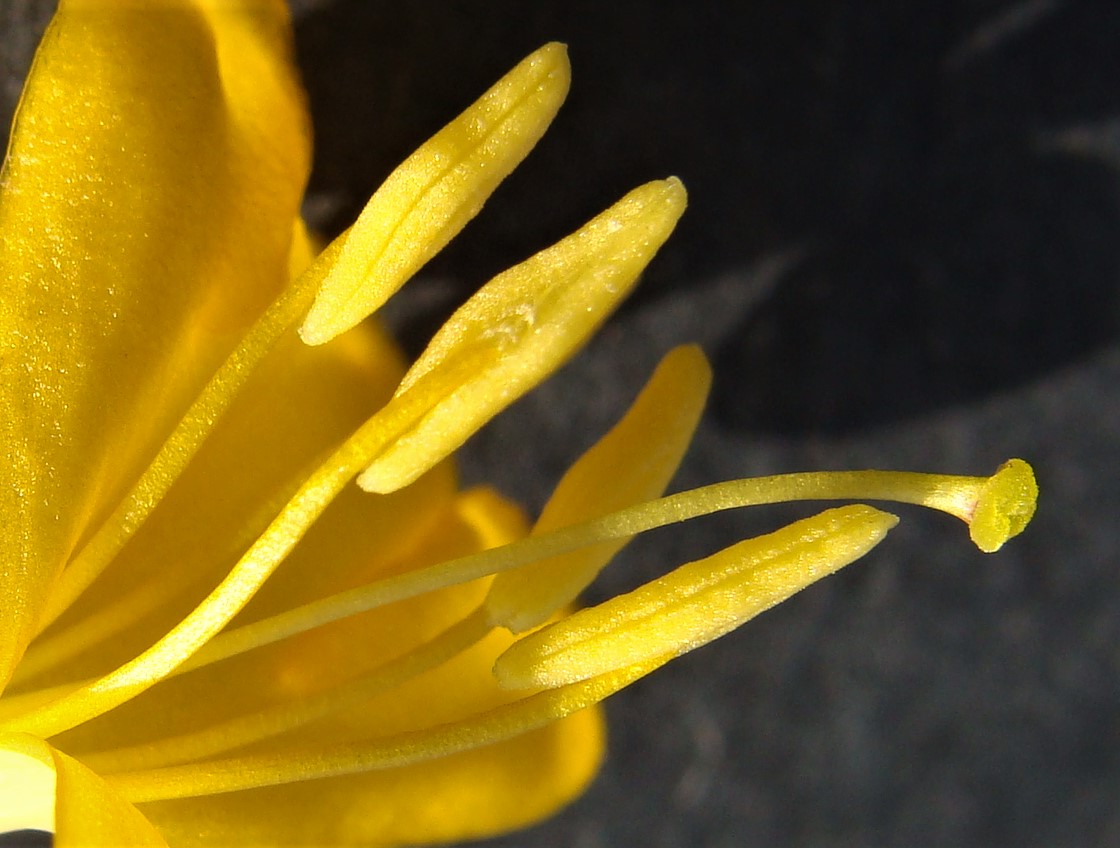

Ovaries of fertilized flowers expand into pale-green elongate-spherical fruits (berries). Berries are glabrous with their apexes marked by a small, rimmed flower-scar. Mature berries, bright red with orange flesh, may remain red into winter before becoming dark and shriveled on the vine, if they are not eaten by wildlife. The 1-5 brown, lightly textured, thickened, ovate seeds are about ¼ inch long and somewhat narrower in width.

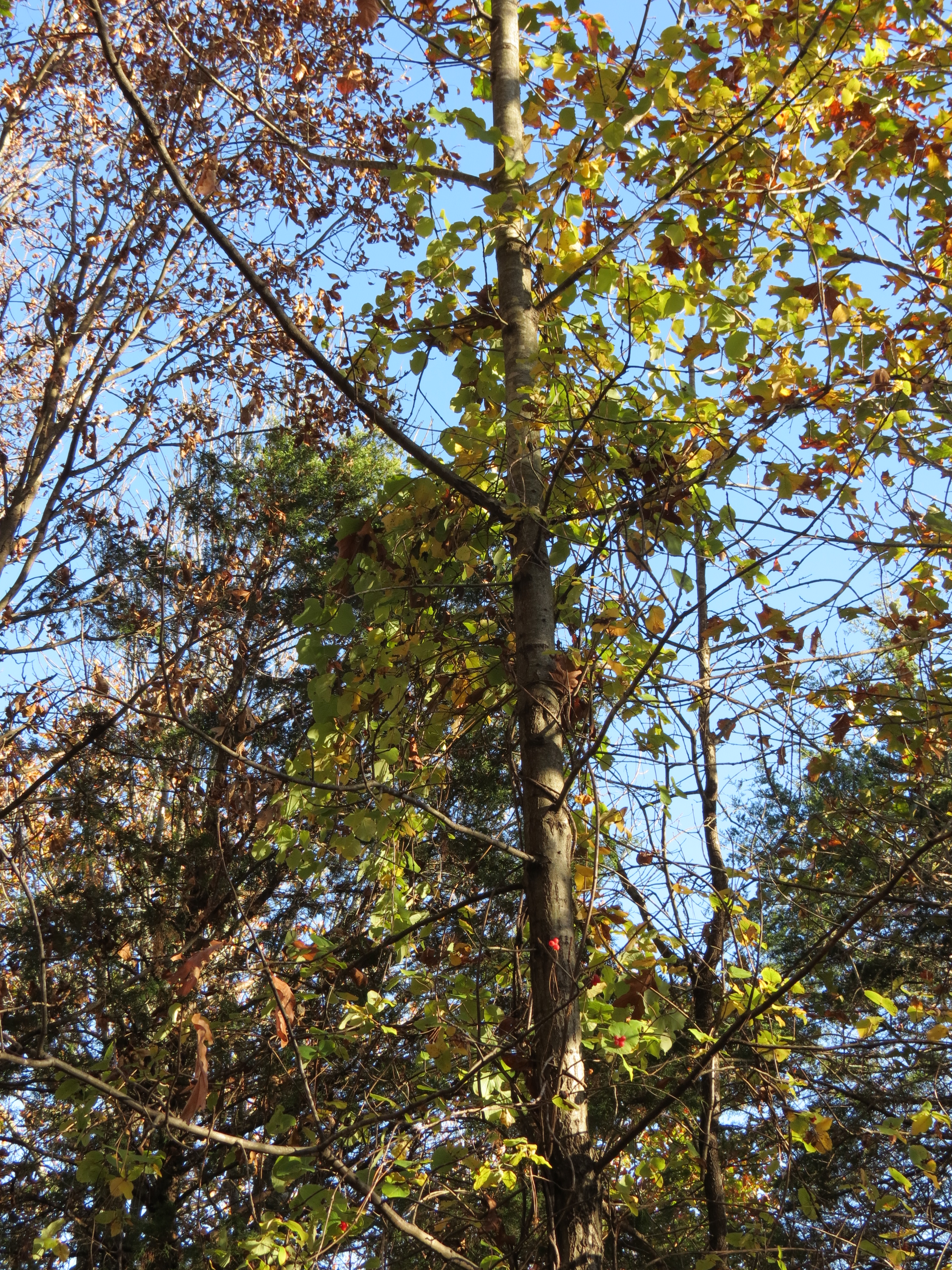
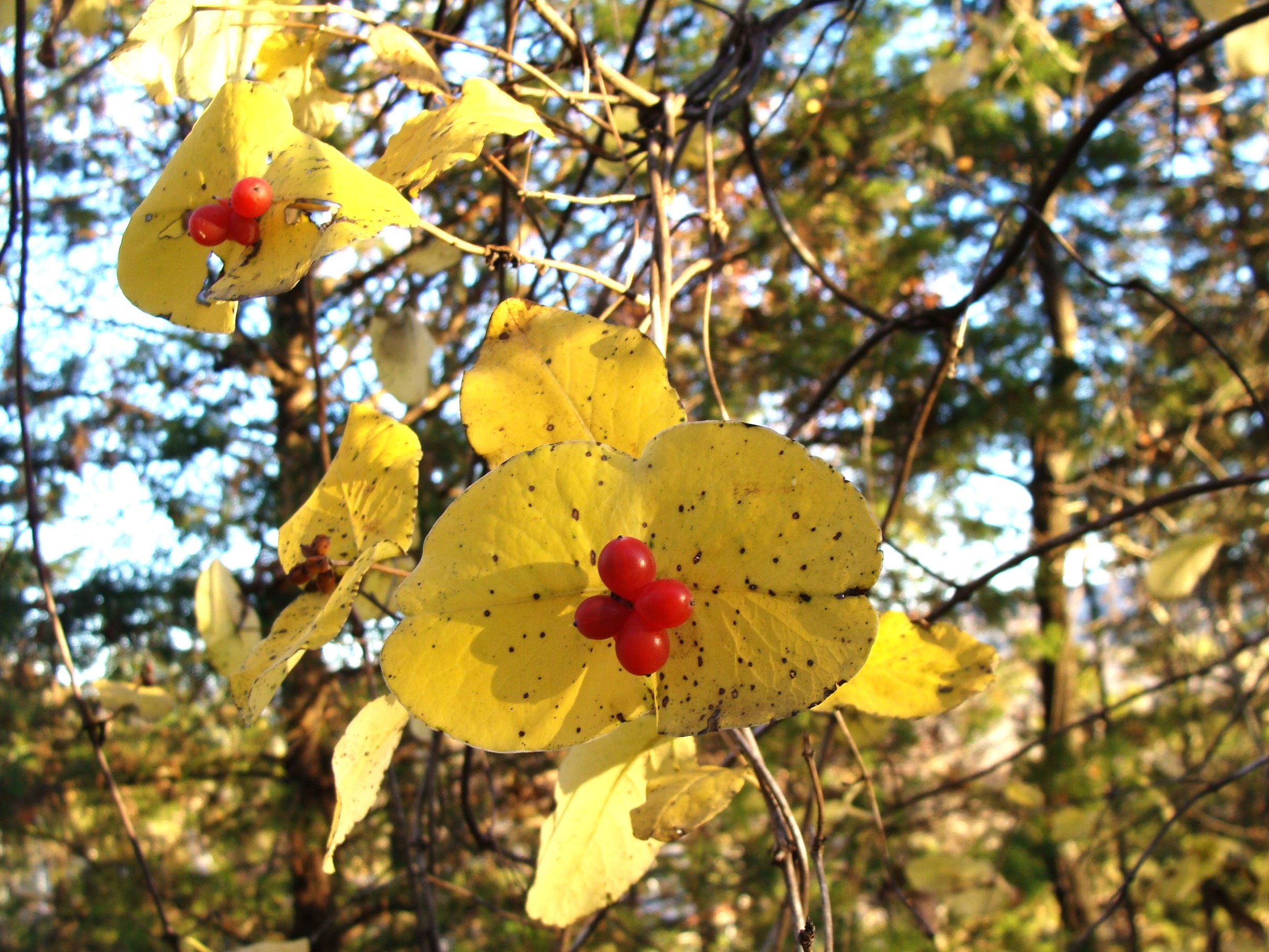
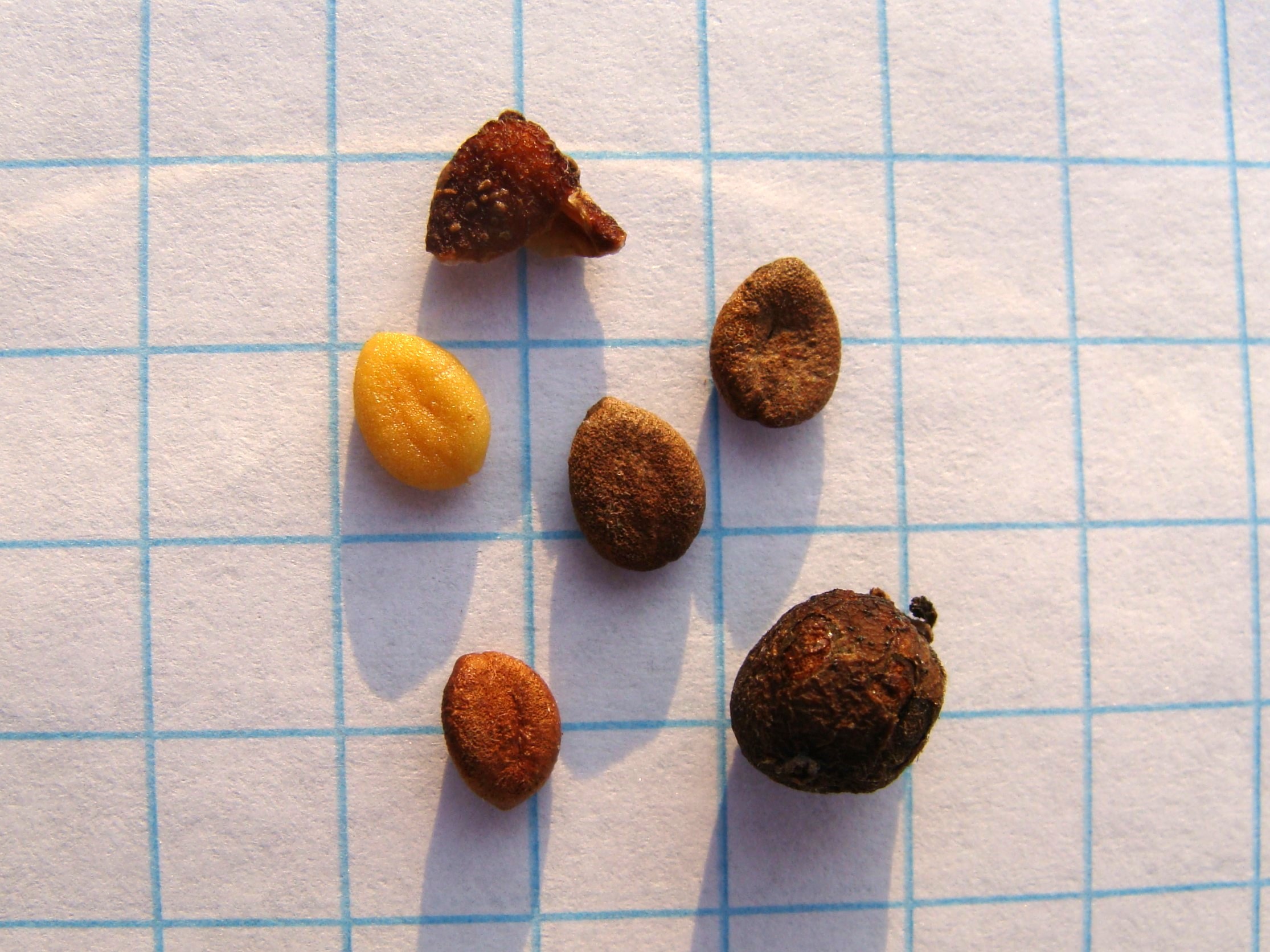
In a sunny garden or natural setting that has small deciduous trees and well-drained soil, Yellow Honeysuckle is an excellent vine for its showiness and value to wildlife. It can trail along ground and may serve as a coarse groundcover. New plants may need assistance to become established on/within a supporting tree or structure. For best flower and fruit display, trimming should be minimized. It is especially showy in bloom but has interesting characteristics throughout the year. Yellow Honeysuckle provides food and shelter for wildlife. It is a favorite vine of hummingbirds and swallowtail butterflies and the loose, viny mass of mature vines provide excellent cover for nesting birds. Not aggressive by vine or seed. Fall foliage may become a strong yellow.
Three additional vining honeysuckles in the Lonicera genus occur in Arkansas; two are native and one is invasive. The two native species have connate-perfoliate terminal leaves, terminal tubular flowers and red fruit, similar to Yellow Honeysuckle. Native Grape Honeysuckle (L. reticulata) has shorter pale-yellow flowers in 5+ whorls so that the infructescence is grape-like. Native Trumpet Honeysuckle (L. sempervirens), has 5-lobed trumpet-shaped flowers that are red outside and yellow inside (rarely, all yellow). Non-native and highly invasive Japanese Honeysuckle (L. japonica) has tubular white to yellow axillary flowers, purple-black fruits and lacks connate-perfoliate leaves. Three non-native invasive shrubs of the Lonicera genus also occur in Arkansas: Fragrant Honeysuckle (L. fragrantissima), Amur Honeysuckle (L. maackii) and Morrow’s Honeysuckle (L. morrowii).
*Also known as Adam Lonitzer and Adamus Lonicerus (1528-1586). His first important illustrated work on herbs, the Kräuterbuch, was published in 1557.
Article and photographs by ANPS member Sid Vogelpohl

